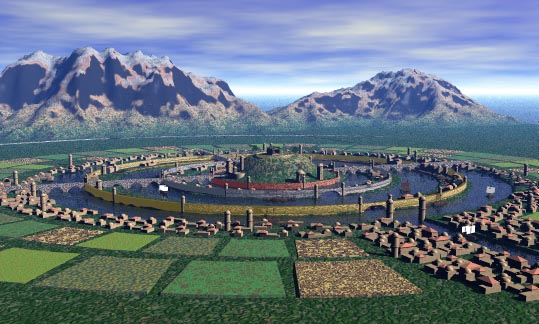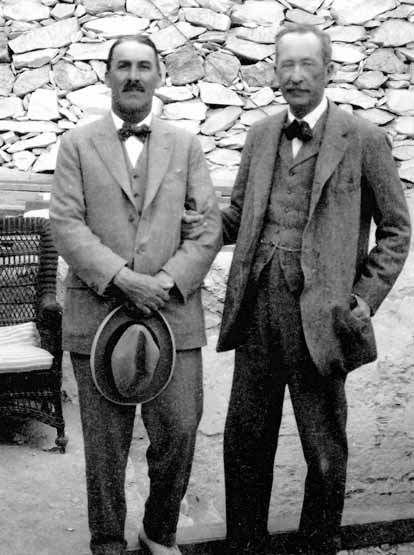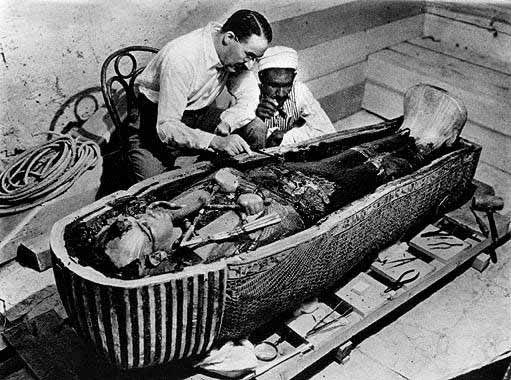What's a UFO?
Since man first started looking up into the
skies he saw things he couldn't explain. For the last
fifty years or so these things have taken on the
label "UFOs." Originally an abbreviation for the Air
Force term "Unidentified Flying Object", it has
become a synonym to most people for "Alien Spaceship."
For the Air Force, though, it is simply a term to refer to something
in the skies that the observer can see but not
recognize. Usually the explanation is less
extraordinary than a flying saucer manned by visitors
from other worlds. Often a weather balloon or natural
phenomenon is the cause. However, there are cases on record
where no good common explanation was ever found.

Photo from the
cover of
Ufo Mysteries: A Reporter Seeks the Truth
by Curt Sutherly
Ufo Mysteries: A Reporter Seeks the Truth
by Curt Sutherly
Dr. J. Allen Hynek, astronomer, foremost
proponent of UFOs, and the one who came up with the
expression "close encounters of the third kind," defines a
UFO as:
The
reported perception of an object or light seen in the sky or
upon land the appearance, trajectory, and general dynamic and
luminescent behaviour of which do not suggest a logical, conventional
explanation and which is not only mystifying to the
original percipients but remains unidentified after close
scrutiny of all available evidence by persons who are
technically capable of making a common sense identification,
if one is possible.
What Hynek
considers to be "all available evidence" may be much less
than what a skeptic would require. For example, the evidence
appealed to by UFOlogists consists of (1) the testimony of
people who claim to have seen aliens and/or alien spacecraft; (2)
facts about the type of people who give the testimony; (3) the
lack of contrary testimony or physical evidence that would
either explain the sighting by conventional means (weather
balloon, prank, meteor shower, reflection of light, etc.) or
discredit the reliability of the eyewitness; and, (4)
alleged weaknesses in the arguments of skeptics against the
UFOlogists. The last item is irrelevant to the issue, yet it
plays a disproportionately large role in UFOlogy.
It seems reasonable to believe that the only
reason we cannot explain these sightings by conventional
means is because we do not have all the evidence - not
because these sightings are probably due to alien
visitations. If we had all the evidence, we would probably
be able to explain the sightings by some conventional means.
The fact that we cannot prove that Mr. and Mrs. Barney Hill
were not abducted by aliens, does not support the hypothesis that
they were abducted by aliens.
Many
UFOlogists think that if eyewitnesses such as Whitley
Strieber, Betty and Barney Hill, or other alleged alien abductees
are not insane or evil, then they cannot be deluded and are to be
trusted with giving accurate accounts of alien abduction.
Yet, it seems obvious that most sane, good, normal people
are deluded about many things and not to be trusted about
certain things.
UFOlogists would
rather follow their faulty logic than accept the conclusions
of Project Blue Book, the U.S. Air Force report which
states that "after twenty-two years of investigation...none of
the unidentified objects reported and evaluated posed a threat to
our national security." (It was in this Blue Book that Edward
Ruppelt coined the term "UFO.") UFOlogists are unimpressed
with the Condon Report, as well. Edward U. Condon was the head
of a scientific research team which was contracted to the
University of Colorado to examine the UFO issue. His report
concluded that "nothing has come from the study of UFOs in
the past 21 years that has added to scientific
knowledge...further extensive study of UFOs probably cannot
be justified in the expectation that science will be
advanced thereby."
It is assumed by
UFOlogists that the government, especially the CIA, is lying
and covering up alien landings and communication. However,
there is no evidence for this other than a general distrust
of the government and the fact that many government officials have
lied, distorted the truth and been mistaken when reporting to the
general public. The CIA, however, has shown little interest
in UFOs since about 1950, except to encourage UFOlogists to
believe that reconnaissance flights might be alien craft.
UFOlogists prefer another kind of lie to the government lie.
They support the work of NBC, for example, which produced
two dozen programs called "Project UFO," said to be based on
Project Blue Book. However, unlike the Air Force, NBC
suggested that there were documented cases of alien
spacecraft sightings. The programs, produced by Jack Webb of
Dragnet fame, distorted and falsified information to make
the presentation look more believable. No UFOlogist took NBC
to task for lying. To the skeptic, NBC was pandering to the
taste of the viewing audience. Government agents lie for
all sorts of reasons, but covering up alien landings does
not seem to be one of them.

Most unidentified flying
objects are eventually identified as hoaxes or astronomical
events, aircraft, satellites, weather balloons, or other
natural phenomena. In studies done by the Air Force, less
than 2% of UFO sightings remain unidentifiable. It is more
probable that with more information those 2% would be
identified as meteors, aircraft, etc., than that they are alien
spacecraft.
The reason no logical
explanation seems credible to UFOlogists is probably because
those making and hearing the reports either do not want to
hear a logical explanation or they make little or no effort
to find one. In any case, the fact that some pilots or scientists
claim they cannot think of any logical explanations for some
perceptual observations is hardly proof that they have observed
alien spacecraft.
If They are Out There, Where?
If we do assume there is intelligent life in
places other than Earth, where might they be? Though
scientists last century thought the planet Mars might
be a good candidate, and some even thought they
detected a huge canal system stretching across the
planet, recent probes sent to Mars have failed to
detect even bacteria-like creatures, let alone a civilization
capable of producing a flying saucer. With the rest of the
planets in our solar system seemingly
too hot or cold, the best hope for intelligent life
seems to be across the void of interstellar space in
other parts of our galaxy.
In an attempt to detect
intelligent life beyond our solar system researchers
have conducted a number of SETI
programs trying to use radio waves to detect the
existence of other civilizations. So far no SETI
program has been successful in finding intelligent
life, but there are millions of stars in our galaxy
alone that might have planets that could harbor life
and carefully looking at each one of them will take a long
time.
Is there
intelligent life on other planets? Have they visited
us on Earth? Are some UFOs alien spaceships? Or are
there other explanations for saucers in the sky? Nobody
has final proof one way or another. We need to keep open eyes
and open minds.
Finally, it should be noted that UFOs are
usually observed by untrained skywatchers and almost never
by professional or amateur astronomers, people who spend
inordinate amounts of time observing the heavens above. One
would think that astronomers would have spotted some of
these alien craft. Perhaps the crafty aliens know that good
scientists are skeptical and inquisitive. Such beings might
pose a threat to the security of a story well-told.
'From more sources'



 If we make the assumption that Atlantis
was a real place, it seems logical that it could be
found west of the Straight of Gibraltar near the Azores
Islands. In 1882 a man named Ignatius Donnelly
published a book titled Atlantis, the Antediluvian World.
Donnelly, an American politician, had come to the belief that
Plato's story represented actual historical fact. He
located Atlantis in the middle of the Atlantic Ocean,
suggesting the Azores Islands represented what remained
of the highest mountain peaks. Donnelly said he had
studied zoology and geology and had come to the conclusion
that civilization itself had begun with the Atlantians and had
spread out throughout the world as the Atlantians
established colonies in places like ancient Egypt and
Peru. Donnelly's book became a world-wide best seller,
but researchers could not take Donnelly's theories
seriously as he offered no proof for his ideas.
If we make the assumption that Atlantis
was a real place, it seems logical that it could be
found west of the Straight of Gibraltar near the Azores
Islands. In 1882 a man named Ignatius Donnelly
published a book titled Atlantis, the Antediluvian World.
Donnelly, an American politician, had come to the belief that
Plato's story represented actual historical fact. He
located Atlantis in the middle of the Atlantic Ocean,
suggesting the Azores Islands represented what remained
of the highest mountain peaks. Donnelly said he had
studied zoology and geology and had come to the conclusion
that civilization itself had begun with the Atlantians and had
spread out throughout the world as the Atlantians
established colonies in places like ancient Egypt and
Peru. Donnelly's book became a world-wide best seller,
but researchers could not take Donnelly's theories
seriously as he offered no proof for his ideas. 


















